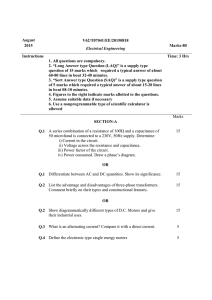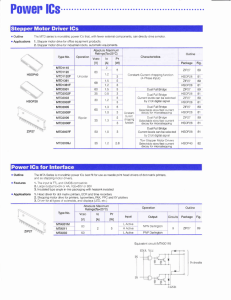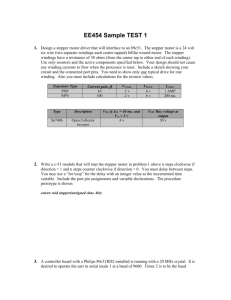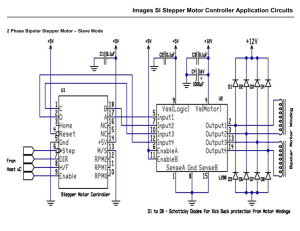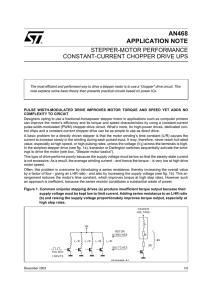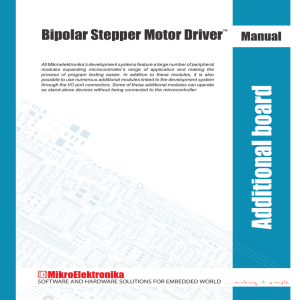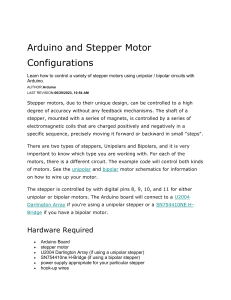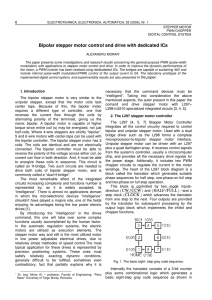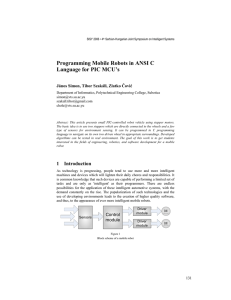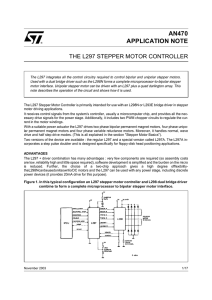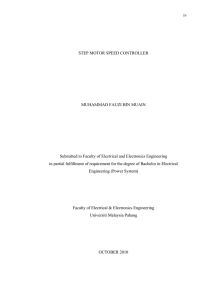STEPPER MOTOR CONTROL Unipolar Stepper Motors
advertisement
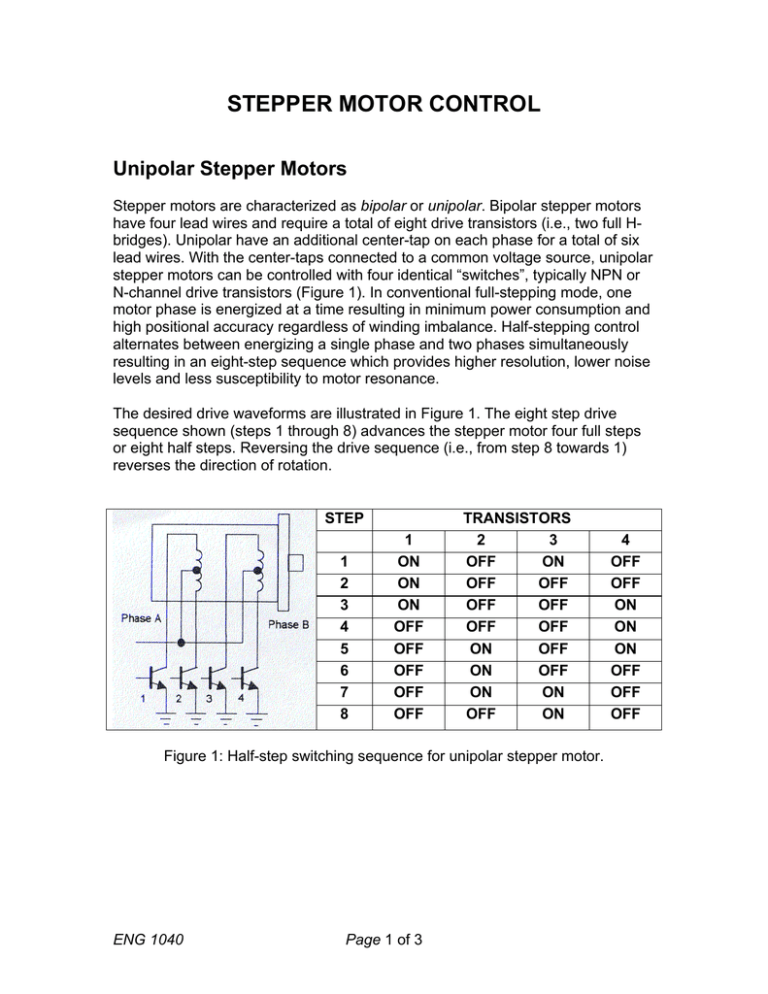
STEPPER MOTOR CONTROL Unipolar Stepper Motors Stepper motors are characterized as bipolar or unipolar. Bipolar stepper motors have four lead wires and require a total of eight drive transistors (i.e., two full Hbridges). Unipolar have an additional center-tap on each phase for a total of six lead wires. With the center-taps connected to a common voltage source, unipolar stepper motors can be controlled with four identical “switches”, typically NPN or N-channel drive transistors (Figure 1). In conventional full-stepping mode, one motor phase is energized at a time resulting in minimum power consumption and high positional accuracy regardless of winding imbalance. Half-stepping control alternates between energizing a single phase and two phases simultaneously resulting in an eight-step sequence which provides higher resolution, lower noise levels and less susceptibility to motor resonance. The desired drive waveforms are illustrated in Figure 1. The eight step drive sequence shown (steps 1 through 8) advances the stepper motor four full steps or eight half steps. Reversing the drive sequence (i.e., from step 8 towards 1) reverses the direction of rotation. STEP 1 2 3 4 5 6 7 8 1 ON ON ON OFF OFF OFF OFF OFF TRANSISTORS 2 3 OFF ON OFF OFF OFF OFF OFF OFF ON OFF ON OFF ON ON OFF ON Figure 1: Half-step switching sequence for unipolar stepper motor. ENG 1040 Page 1 of 3 4 OFF OFF ON ON ON OFF OFF OFF Figure 2: “Two-phase-on” full step and half-step switching sequence for bipolar stepper motor. Bipolar Stepper Motors Simplified to the bare essentials, a bipolar permanent magnet motor consists of a rotating permanent magnet surrounded by stator poles carrying the windings (figure 3). Bidirectional drive current is used and the motor is stepped by switching the windings in sequence. For a motor of this type there are three possible drive sequences. The first is to energize the windings in the sequence AB/CD/BA/DC (BA means that the winding AB is energized but in the opposite sense). This sequence is known as "one phase on" full step or wave drive mode. Only one phase is energized at any given moment (figure 4a). The second possibility is to energize both phases together, so that the rotor always aligns itself between two pole positions. Called "two-phase-on" full step, this mode is the normal drive sequence for a bipolar motor and gives the highest torque (figure 2 and figure 4b). The third option is to energize one phase, then two, then one, etc., so that the motor moves in half step increments. This sequence, known as half step mode, halves the effective step angle of the motor but gives a less regular torque (figure 2 and figure 4c). For rotation in the opposite direction (counter-clockwise) the same three sequences are used, except of course that the order is reserved. As shown in these diagrams the motor would have a step angle of 90°. Real motors have multiple poles to reduce the step angle to a few degrees but the number of windings and the drive sequences are unchanged. ENG 1040 Page 2 of 3 Figure 3: Simplified representation of a bipolar permanent magnet ENG 1040 Page 3 of 3
